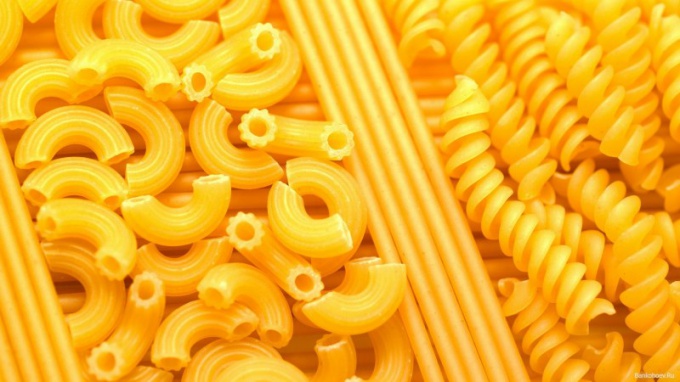Instruction
1
Pasta are made from flour, it is desirable to choose products made from durum wheat. The average caloric content of dry pasta is about 350 Kcal/100 g. the Calorie content of dry pasta is usually indicated on the package. But no need to take this figure to calculate the caloric content of ready-cooked pasta.
2
Pasta change its weight in the cooking process, because they fall apart and become harder. So, the option of cooking pasta in normal water which has zero calories. If you cook pasta in the broth, the calorie content will be slightly higher. For noodle is the rule: how many times mass increase of dry pasta, so many times the caloric content of the finished product less.
3
If you take the ratio of the caloric content of the finished product and dry, we get a ratio of 1 to 2, i.e. the caloric value of 100 g of dry pasta in two times more than the energy value per 100 g ready. Thus, the caloric value of 100 g product can be considered equal to 175 Kcal.
4
But we must remember that reducing calorie portions is increased and the size of the meals. And if you cooked 100 g dry pasta calories Kcal 350 and they were cooked in 200 grams of macaroni pasta with calories 175 Kcal per 100 grams, then you need to eat a half cooked or you will back calorie dry product. We should not just forget about all sorts of sauces, condiments, dressings and dips that are all so like to add in the macaroni. Their caloric content need to be calculated separately. Some people like to dress pasta with butter, some sour cream or ketchup. But if on top of the macaroni and cheese to RUB, this will increase the caloric value of the meals for a couple dozen calories.
5
For example, if you fill a piece of pasta tablespoon of olive oil, the caloric value of the dish will increase by 135 Kcal. If you add 30 g of sour cream, you can add 50 Calories. To calculate the caloric content of the finished fuel stations simply. Need to know the calorie content of the product per 100 g and the weight of the finished product for filling.
6
There is another point connected with the preparation of meals. You need to remember about salt. By itself, salt has zero calories, but it irritates the taste buds, as a result, the portion eaten can be increased 1.5 and 2 times. To avoid this, it is important not to overdo the food and monitor portion size.
Useful advice
It is recommended that when cooking, add water a little olive oil, then cooling the pasta will not stick together in the pan. Calorie content is not fundamentally affected.
